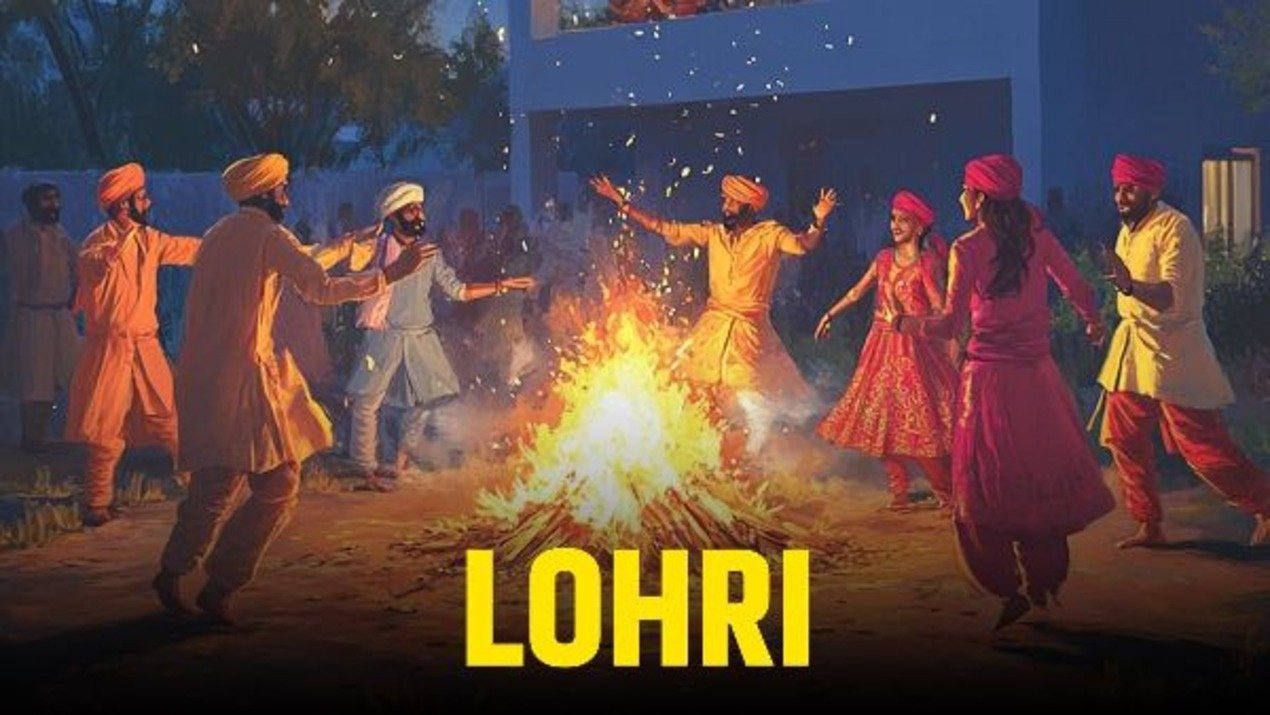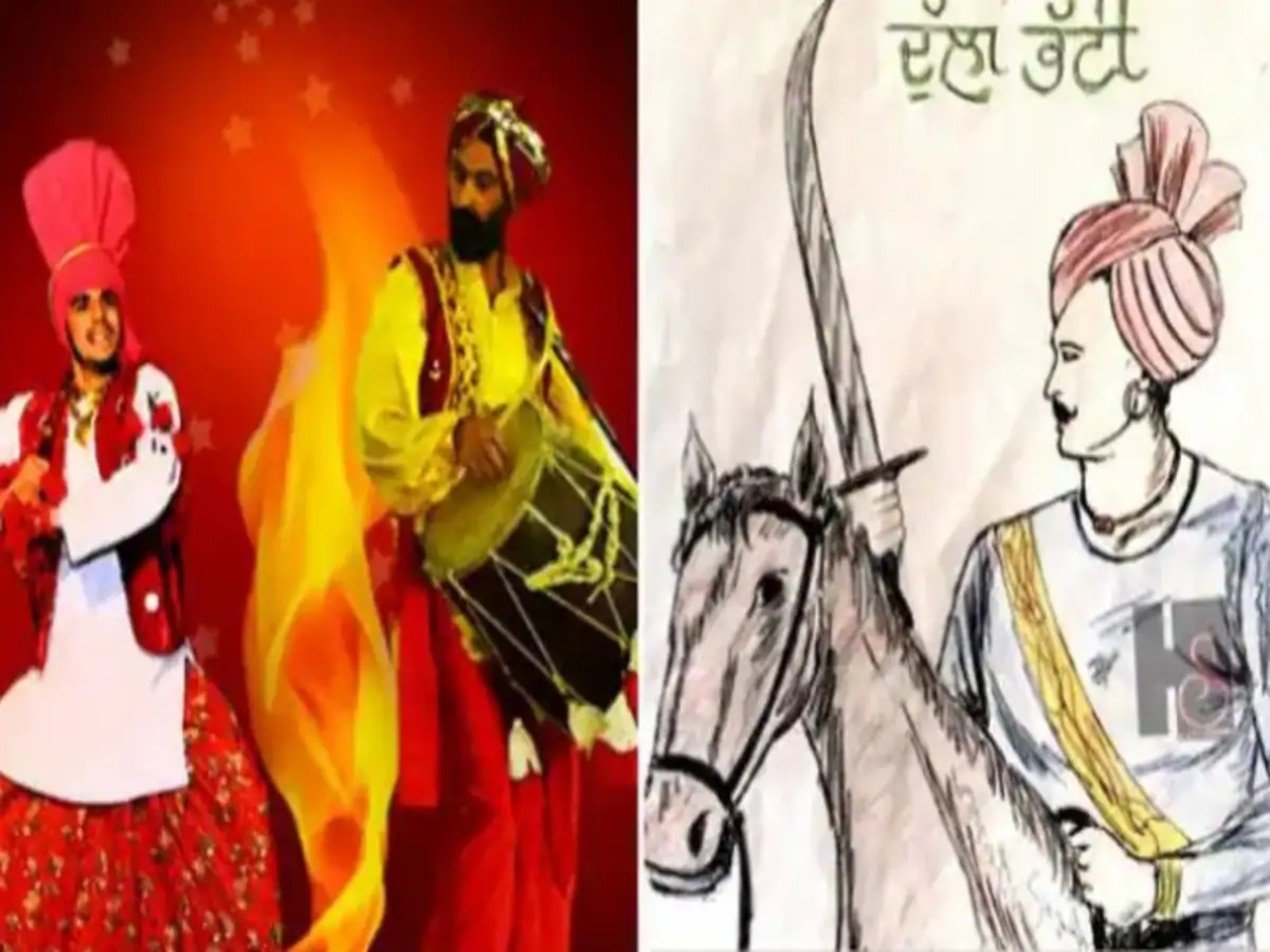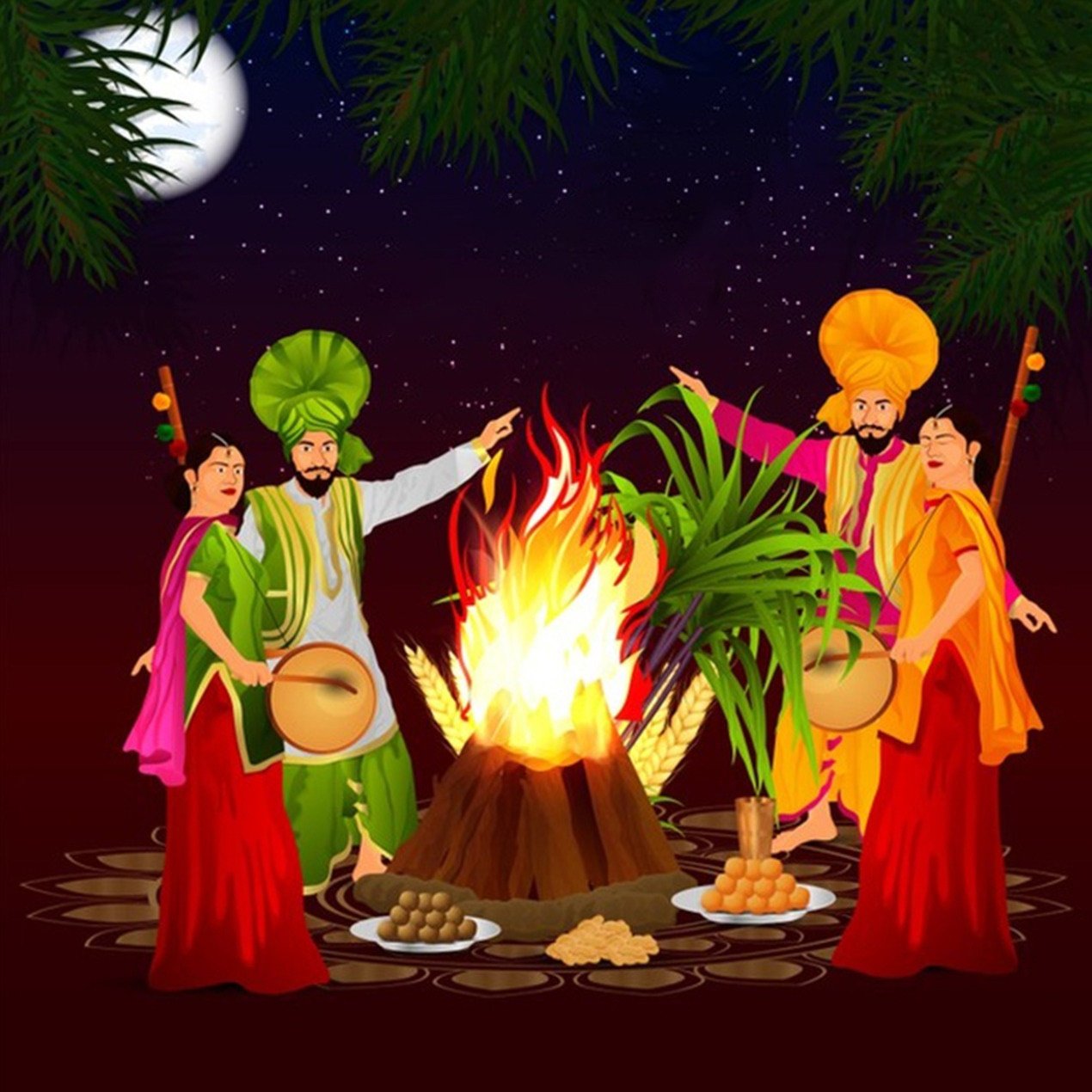Lohri, a vibrant and joyous festival, marks the end of the winter season and ushers in the harvest season in northern India. Celebrated primarily in Punjab, Haryana, Himachal Pradesh, and parts of Delhi, Lohri holds immense cultural and agricultural significance. Observed on January 13 every year, the festival is a time for families and communities to come together, express gratitude for nature’s bounty, and share moments of happiness.
The festival is enriched by age-old traditions, folk songs, and a connection to the legendary Dulla Bhatti, making it a celebration of cultural heritage and social values. In this article, we delve into the origins, rituals, and evolving significance of Lohri, shedding light on its timeless appeal.

Historical and Cultural Origins of Lohri
An Agricultural Celebration
Lohri has its roots in the agrarian lifestyle of northern India. It signifies the end of the winter solstice and the beginning of longer, warmer days. The festival coincides with the harvesting of the rabi crops, particularly sugarcane, wheat, and mustard, which are crucial to the livelihood of farmers in the region.
For generations, Lohri has been a time to thank the Sun God for the energy and warmth that nurtures the crops. The bonfire, a central element of the festival, symbolizes a connection to nature and acts as a medium to offer prayers for prosperity.
The Legend of Dulla Bhatti
One of the most compelling aspects of Lohri is its association with Dulla Bhatti, a legendary folk hero of Punjab. Born during the reign of Emperor Akbar, Dulla Bhatti (also known as Rai Abdullah Khan Bhatti) is remembered for his acts of resistance against tyranny and oppression.
Dulla Bhatti is often referred to as the “Robin Hood of Punjab” for his courage and generosity. He is celebrated for rescuing young girls from being sold into slavery, arranging their marriages, and providing dowries to ensure their dignity and future security. Folk songs sung during Lohri honor his bravery and kindness, ensuring that his legacy lives on in the hearts of people.
The famous folk song dedicated to Dulla Bhatti, sung around the bonfire, is:
“Sunder mundriye ho!
Tera kaun vichara ho?
Dulla Bhatti wala ho!”
This song, and others like it, celebrates not only Dulla Bhatti’s heroism but also the spirit of community and justice that Lohri represents.

Significance of Lohri
Lohri is a festival that transcends religious boundaries and celebrates universal themes of gratitude, renewal, and togetherness.
Symbol of Gratitude and Renewal
The festival marks the transition from the cold, dark days of winter to the promise of a warm and bountiful spring. It is a time to thank nature for its gifts and to pray for continued prosperity. Farmers, in particular, see Lohri as an opportunity to celebrate the fruits of their labor and prepare for the next planting season.
A Festival of Togetherness
Lohri is as much about social bonding as it is about nature and agriculture. Families, friends, and neighbors come together to share food, sing songs, and dance around the bonfire. The festival fosters a sense of unity and mutual respect, making it a celebration of community.
Celebration of Milestones
Lohri holds special significance for families celebrating new beginnings. It is considered an auspicious occasion to mark the arrival of a newborn, the marriage of a couple, or the achievement of a bountiful harvest. In these celebrations, the festival becomes a deeply personal and joyous occasion, filled with blessings and gratitude.
Rituals and Traditions of Lohri
The Bonfire and Offerings
The bonfire is the heart of Lohri celebrations. It represents warmth, light, and renewal. People gather around the fire, offering sesame seeds (til), jaggery (gur), puffed rice, and corn to the flames. These offerings symbolize gratitude to nature and prayers for a prosperous future.
As the fire crackles, people sing traditional folk songs, dance, and share stories. The collective act of gathering around the bonfire reinforces a sense of community and togetherness.

Singing Folk Songs
The songs sung during Lohri are deeply rooted in Punjabi culture. They tell tales of love, courage, and celebration, with a significant emphasis on the legend of Dulla Bhatti. These songs are passed down through generations, keeping the rich heritage of Punjab alive.
Dance and Music
Dance and music are integral to Lohri. Traditional Punjabi dances like bhangra and gidda bring an infectious energy to the festivities. The beats of the dhol (drum) create an electrifying atmosphere, encouraging everyone to participate in the celebrations.
Festive Feasting
Lohri is also a culinary delight. The festival’s menu includes traditional Punjabi dishes such as makki di roti (cornbread) and sarson da saag (mustard greens). Sweets like gajak, til ladoos, and revari are made from seasonal ingredients and symbolize abundance and prosperity.
Children’s Participation
Children play a special role in Lohri. In the days leading up to the festival, they go door-to-door singing folk songs and collecting Lohri loot—a mix of sweets, nuts, and money. This tradition brings joy to both children and adults, creating a festive atmosphere across neighborhoods.
Regional Variations of Lohri
While Lohri is most prominently celebrated in Punjab, its essence resonates in other states with slight regional variations:
- Haryana: The customs are similar to Punjab, but there is a stronger emphasis on celebrating family milestones like marriages and childbirth.
- Himachal Pradesh: In Himachal Pradesh, Lohri is often celebrated alongside local fairs and cultural events.
- Delhi and NCR: Urban celebrations in Delhi and its surrounding areas often blend traditional rituals with modern festivities, including organized community events.
Lohri in Modern Times
As society evolves, Lohri has adapted to modern lifestyles while retaining its traditional charm.
Eco-Friendly Celebrations
With increasing environmental awareness, communities are adopting eco-friendly practices during Lohri. Bonfires are made smaller, using minimal wood and biodegradable materials to reduce environmental impact.
Digital Festivities
In the digital age, social media has become an integral part of Lohri celebrations. People share photos, videos, and greetings online, connecting with loved ones across the globe.
Global Celebrations
Lohri is no longer confined to India. The Indian diaspora in countries like the United States, Canada, the United Kingdom, and Australia celebrates Lohri with great enthusiasm, blending traditional rituals with the host country’s cultural elements.
Why Lohri Matters Today
Preservation of Cultural Heritage
Lohri serves as a reminder of India’s rich cultural traditions. The songs, dances, and rituals associated with the festival ensure that this heritage is passed down to future generations.
Celebrating Social Values
The story of Dulla Bhatti highlights the festival’s underlying values of courage, generosity, and justice. These timeless ideals continue to inspire people, making Lohri a celebration of humanity as much as nature.
Fostering Unity
By bringing people together, Lohri reinforces a sense of community and mutual respect. It transcends religious and cultural boundaries, celebrating universal themes of gratitude and togetherness.
Conclusion
Lohri is more than just a harvest festival; it is a celebration of life, nature, and cultural heritage. Its vibrant rituals, connection to the legend of Dulla Bhatti, and emphasis on community make it a deeply meaningful occasion.
As we celebrate Lohri in 2025 and beyond, let us honor its traditions while embracing sustainable and inclusive practices. By doing so, we can ensure that Lohri remains a source of joy and inspiration for generations to come.
Let the flames of the Lohri bonfire remind us of our shared humanity, the beauty of togetherness, and the enduring spirit of gratitude.
